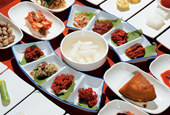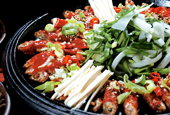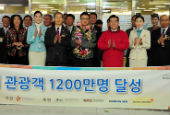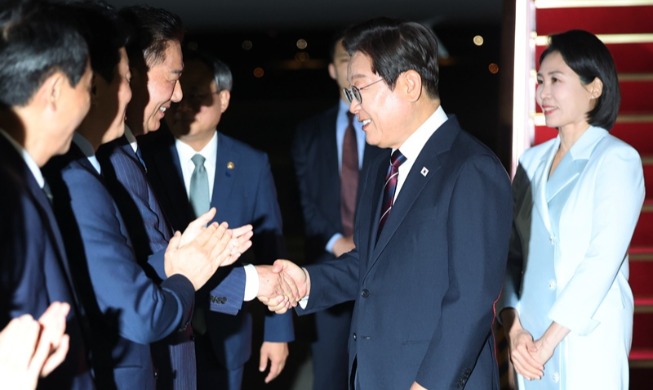Korea is a nation that has long preserved its agricultural traditions. When farmers used to lend each other a hand during harvest season, it was called durae. A group of six to ten neighbors would form a durae to give a hand to each other during every stage of the rice cycle: planting, weeding, harvesting and threshing. No member of the community would expect any financial return for their labor and after harvest, every member gathered together to eat, drink and to enjoy singing and dancing while reaffirming the unity and the community’s sense of kinship.
Today, in spite of rapid urbanization, the durae tradition lives on.
Recently, the Ministry of Culture, Sports and Tourism (MCST) joined hands with the Korea Culture and Tourism Institute to launch their “Tourism Durae” (unofficial translation) program, a form of rural tourism cooperative aimed at attracting urban visitors.
It is the two tourism bureaus’ plan to help local residents cooperate with each other to form small corporations that would offer regional specialties—mostly food or accommodations—to visitors, offering to the tourists experiences that they would otherwise never be able to experience first-hand. The range of tourism services can be expanded beyond basic food and accommodations to include regional delicacies, souvenirs, outdoor activities, trail guides and even cultural programs, such as musical performances and other festivals. The Korean government expects this program to bring more job opportunities to the smaller towns and to help raise incomes across the region.
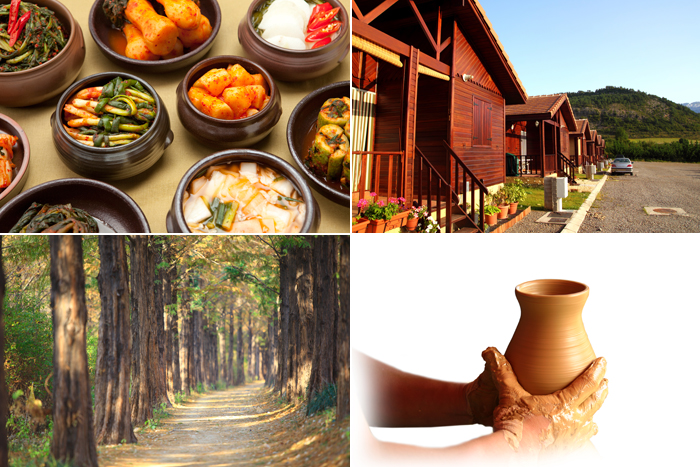
Since last August, this rural tourism cooperative program has been implemented across five different regions of the peninsula: Yangpyeong in Gyeonggi-do (Gyeonggi Province), Yanggu in Gangwon-do (Gangwon Province), Jecheon in Chungcheongbuk-do (North Chungcheong Province), Buan in Jeollabuk-do (North Jeolla Province) and Cheongsong in Gyeongsangbuk-do (North Gyeongsang Province).
All five regions have different topographies, covering urban areas, the borderland, inland regions, coastal regions and mountainous regions, respectively. Based on the culture and traditions of each town, a network of nine corporations was created in Yangpyeong, one of eight corporations in Yanggu, also eight in Jecheon, six corporations joined together in Cheongsong and six in Buan, too. For example, Yangpyeong has a canoe association, Yanggu has a DMZ trail-walking company and Cheongsong has a traditional craftwork company, to name but a few of the tourism firms. Each region is making the best of its regional characteristics and its unique geography and history.
 The program’s pilot project last year received unexpectedly rave reviews from local residents and drew the attention of relevant local government organizations. It prompted the MCST to expand the scope of the project, taking steps to select “Durae Producers” in 20 new regions this year. Once launched, the MCST will provide the “producers,” the newly formed local tourism companies, with educational programs and mentoring programs that will help the new entrepreneurs open new businesses. Moreover, the MCST will help form a nationwide tourism network by establishing connections between the new “producers” in each region.
The program’s pilot project last year received unexpectedly rave reviews from local residents and drew the attention of relevant local government organizations. It prompted the MCST to expand the scope of the project, taking steps to select “Durae Producers” in 20 new regions this year. Once launched, the MCST will provide the “producers,” the newly formed local tourism companies, with educational programs and mentoring programs that will help the new entrepreneurs open new businesses. Moreover, the MCST will help form a nationwide tourism network by establishing connections between the new “producers” in each region.
The logo for the “Tourism Durae” program uses the image of two Hangeul consonants: ㄷ, or “d,” and ㄹ, “r.” The two consonants face each other, symbolizing the du-rae tradition that encourages people to work together and to cooperate with each other.
By Lee Seung-ah
Korea.net Staff Writer
slee27@korea.kr
Today, in spite of rapid urbanization, the durae tradition lives on.
Recently, the Ministry of Culture, Sports and Tourism (MCST) joined hands with the Korea Culture and Tourism Institute to launch their “Tourism Durae” (unofficial translation) program, a form of rural tourism cooperative aimed at attracting urban visitors.
It is the two tourism bureaus’ plan to help local residents cooperate with each other to form small corporations that would offer regional specialties—mostly food or accommodations—to visitors, offering to the tourists experiences that they would otherwise never be able to experience first-hand. The range of tourism services can be expanded beyond basic food and accommodations to include regional delicacies, souvenirs, outdoor activities, trail guides and even cultural programs, such as musical performances and other festivals. The Korean government expects this program to bring more job opportunities to the smaller towns and to help raise incomes across the region.

The “Tourism Durae” project makes it easier for small-town tourism companies to provide local food, sports and accommodation experiences to visiting travelers (photos: iclicki)
Since last August, this rural tourism cooperative program has been implemented across five different regions of the peninsula: Yangpyeong in Gyeonggi-do (Gyeonggi Province), Yanggu in Gangwon-do (Gangwon Province), Jecheon in Chungcheongbuk-do (North Chungcheong Province), Buan in Jeollabuk-do (North Jeolla Province) and Cheongsong in Gyeongsangbuk-do (North Gyeongsang Province).
All five regions have different topographies, covering urban areas, the borderland, inland regions, coastal regions and mountainous regions, respectively. Based on the culture and traditions of each town, a network of nine corporations was created in Yangpyeong, one of eight corporations in Yanggu, also eight in Jecheon, six corporations joined together in Cheongsong and six in Buan, too. For example, Yangpyeong has a canoe association, Yanggu has a DMZ trail-walking company and Cheongsong has a traditional craftwork company, to name but a few of the tourism firms. Each region is making the best of its regional characteristics and its unique geography and history.

The logo for the "Tourism Durae"
The logo for the “Tourism Durae” program uses the image of two Hangeul consonants: ㄷ, or “d,” and ㄹ, “r.” The two consonants face each other, symbolizing the du-rae tradition that encourages people to work together and to cooperate with each other.
By Lee Seung-ah
Korea.net Staff Writer
slee27@korea.kr
Related Contents
Most popular
- Military discharge sets stage for reunion of all 7 BTS members
- 'We are back!' BTS Festa heralds hyped return of K-pop phenom
- Presidents Lee, Trump discuss tariff deal in first phone talks
- 'Maybe Happy Ending' wins 6 Tonys including Best Musical
- President Lee leaves for G7 Summit in Canada on first int'l trip
